Since I started working about 7 years ago, I have eaten oatmeal for breakfast before work about 4 out of every 5 weekdays. Just recently, Julie and I decided that she would take over oatmeal-making duties to better align our morning schedules, and I had to show her how to do it.
The recipe itself is quite simple.
Kevin’s Steel-Cut Oatmeal
(based on a America’s Test Kitchen recipe)
4 servings, 15 minutes active, 8 hours total
Ingredients
- 1 cup steel-cut oatmeal (I use Bob’s Red Mill)
- 3 cups water
- 1 cup milk
- 1/4 cup brown sugar (or other sweetener)
- other mixins of your choice (berries, peanut butter, cinnamon, etc.)
Directions
- The night before, bring water to a boil and mix in oatmeal. Turn off the heat
- In the morning, add milk and bring the mixture back to a boil over high heat.
- When it boils, turn heat down to medium-low and cook for 10 minutes
- Take off the heat, add brown sugar and other mixins.
- Serve.
However, when I was walking Julie through how I make the oatmeal, I found that most of the actual steps were somewhat specific and had a lot of related explanation to them. That is the full recipe I have reproduced below.
1. The night before, heat up 3 cups of water on high in a nonstick saucepan. Leave the liquid measure out for the milk in the morning.
2. Scoop out 1 cup of oatmeal from the tub and place it into a serving bowl. It’s a lot easier to transfer and pour from a serving bowl rather than trying not to spill the 1 cup measure between the tub and the stove.
3. Get out 1 more bowl and a tupperware container. Set the tupperware top closest to the burner as the spoon rest to use the in morning since it will save a dish later and has a wider area than the spoon rest anyways.
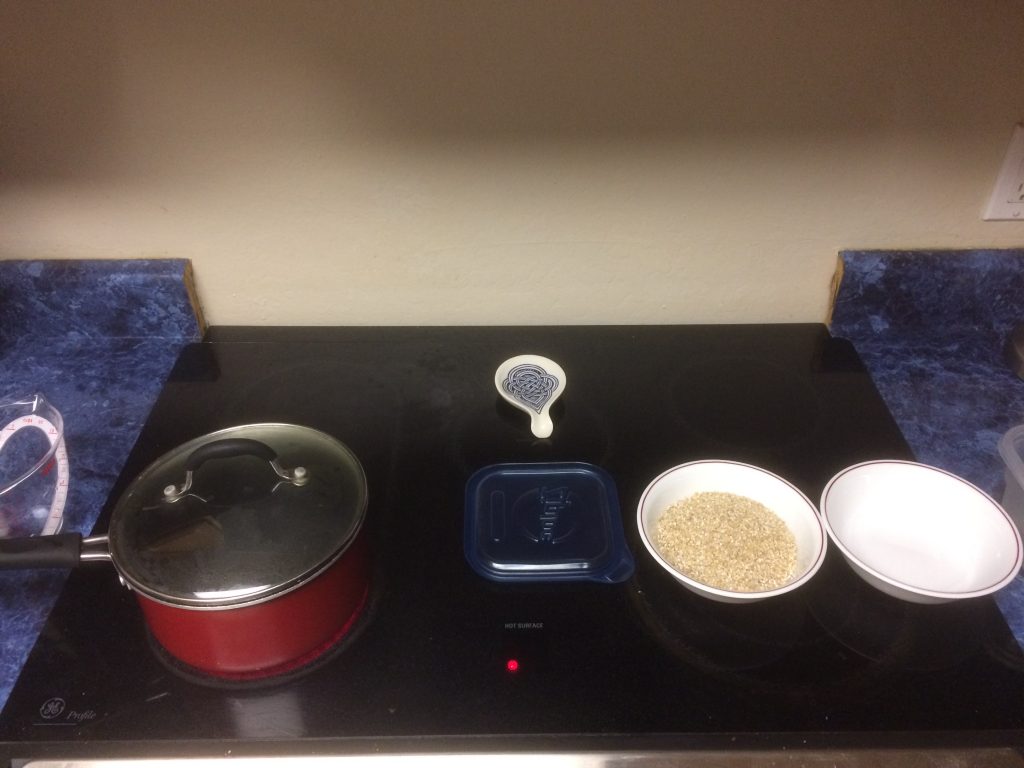
While waiting for the water to boil, make sandwiches for lunch tomorrow.
4. When the water is just barely boiling, dump in oats, and turn off heat. Watch to see if it froths a lot. If so, lift off lid so it goes back down and doesn’t boil over or get gunk on the top, which is really hard to clean because it dries in overnight. You may have to do this several times if the water was too hot before putting the oats in.
5. In the morning, turn on heat on high first thing before anything else so the pan starts to warm up while you’re gathering other things.
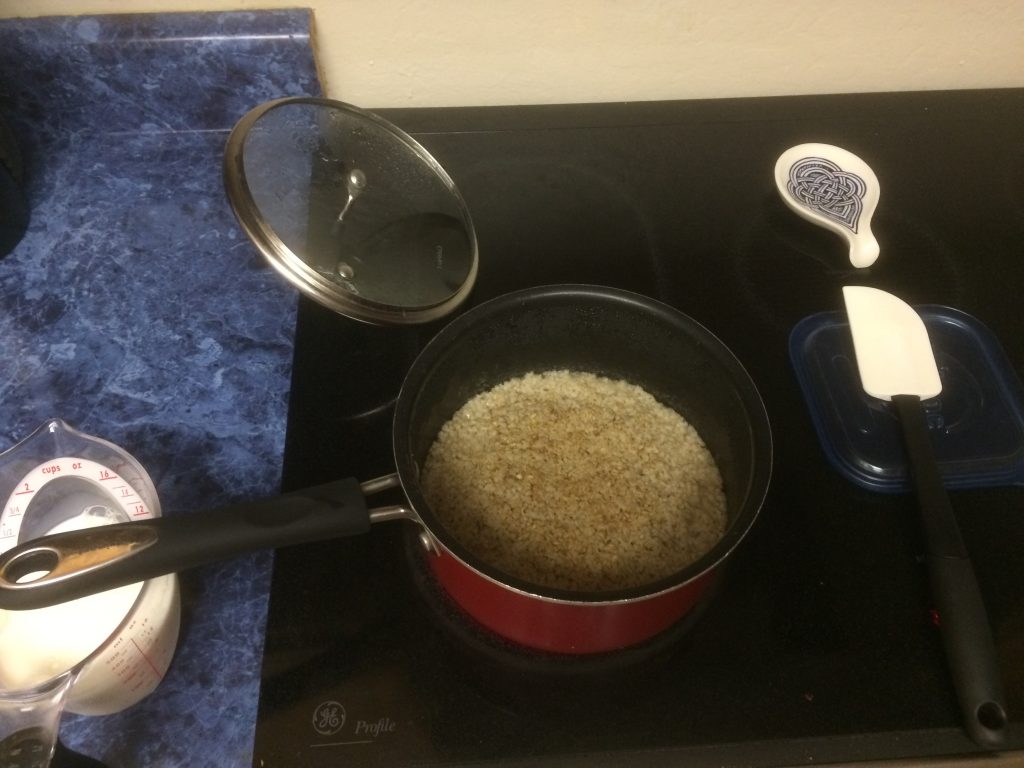
6. Get 1 cup of milk and dump it in. Before careful about the condensed liquid in the top (I usually just pour it back into the pan). Put the measuring cup in the sink and rinse lightly with a bit of water.
7. Break up the oatmeal using a flexible spatula, then stir. Be careful while breaking it up because the liquid will splash a lot with quick movements, so do it slowly until the mixture homogenizes. I use the stiffest flexible spatula I have because it does the best job of scraping the bottom of the pan.
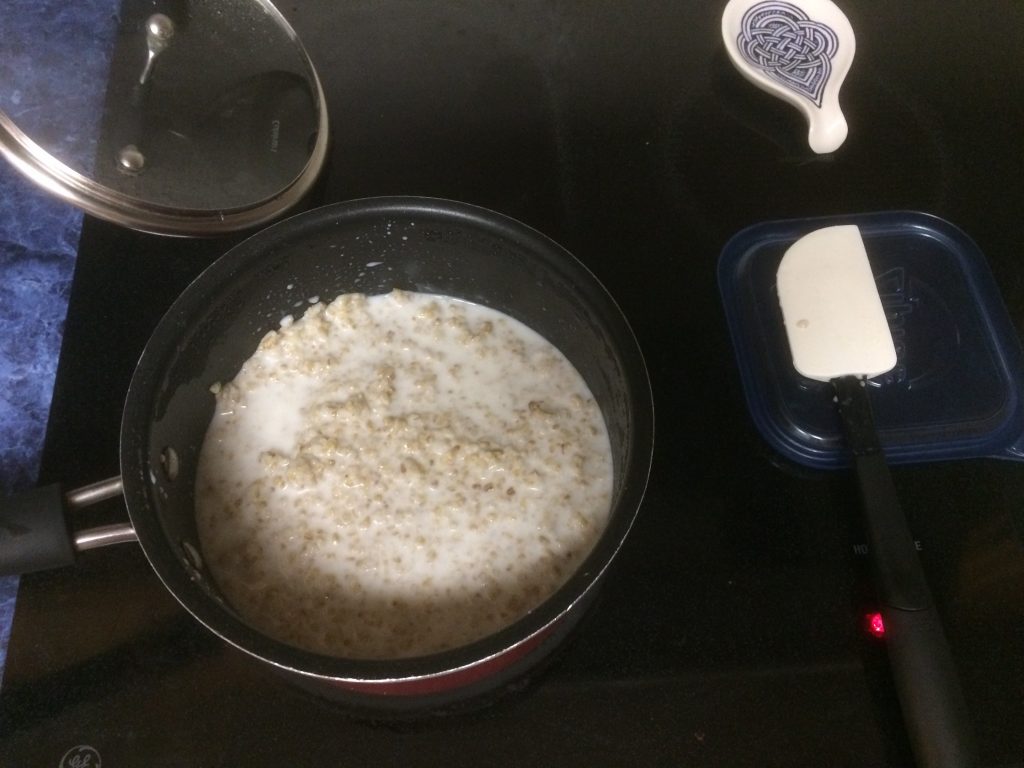
8. Put the lid back on. Stir every minute or so while being very careful to scrape the bottom aggressively, or else a film will form on the bottom.
9. When it starts to come to a boil, turn heat down to medium-low and set a timer for 10 minutes. It will start to pop a lot. Be careful not to get burned by the splatter. Also keep a wet sponge nearby if it splatters onto the counter.
Continue to stir occasionally, always scraping the bottom, especially in the corners. Meanwhile, put away dishes in the drying rack, get sandwiches out of the fridge, assemble oatmeal toppings, and do other morning prep stuff in-between.
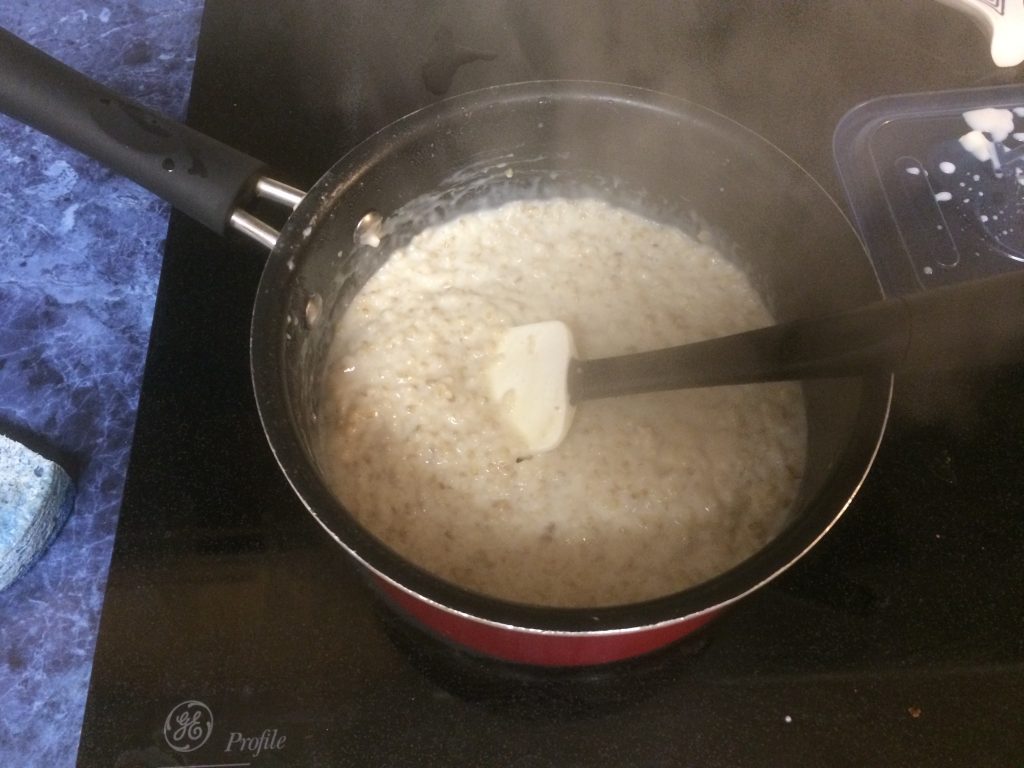
10. When the timer goes off, turn off the heat, scrape again, and remove the pan from the heat.
11. Using a ladle, put a scoop into each bowl, and then 2 into the tupperware (4 servings split across 2 mornings). 2 scoops per serving is about right assuming that you don’t shake it too clean. The last scoop will probably need to be finished by using the spatula to scrape out the pan.

12. Weigh the servings. It should come to a little less than 15 oz each with our bowls, so transfer to and from the tupperware to even out the servings.
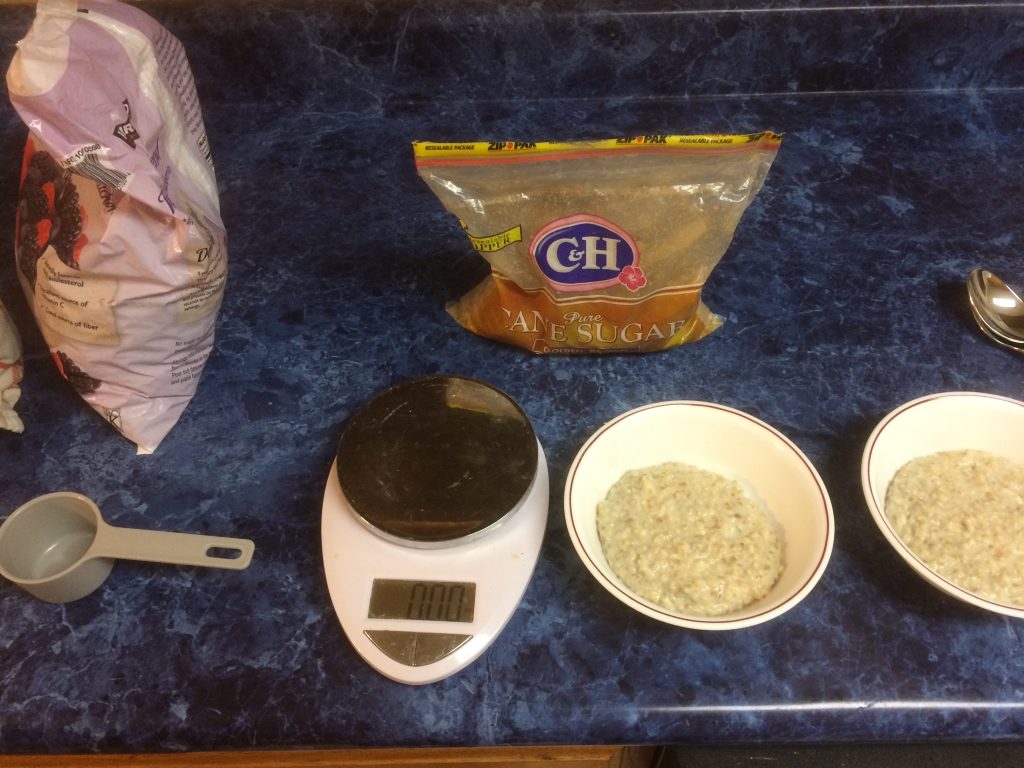
13. Add the sweetener first (usually brown sugar, sometimes honey or maple syrup) and stir it in to distribute evenly.
Next, add the other mixins, such as dried fruit (which I may have cut up while the oatmeal was cooking), fresh fruit, peanut butter, chocolate chips, etc.). I usually do frozen berries on the first day since the oatmeal is often too hot, so everything comes out to the right temperature. On the second day when I’m reheating the last batch, I will use other mixins.
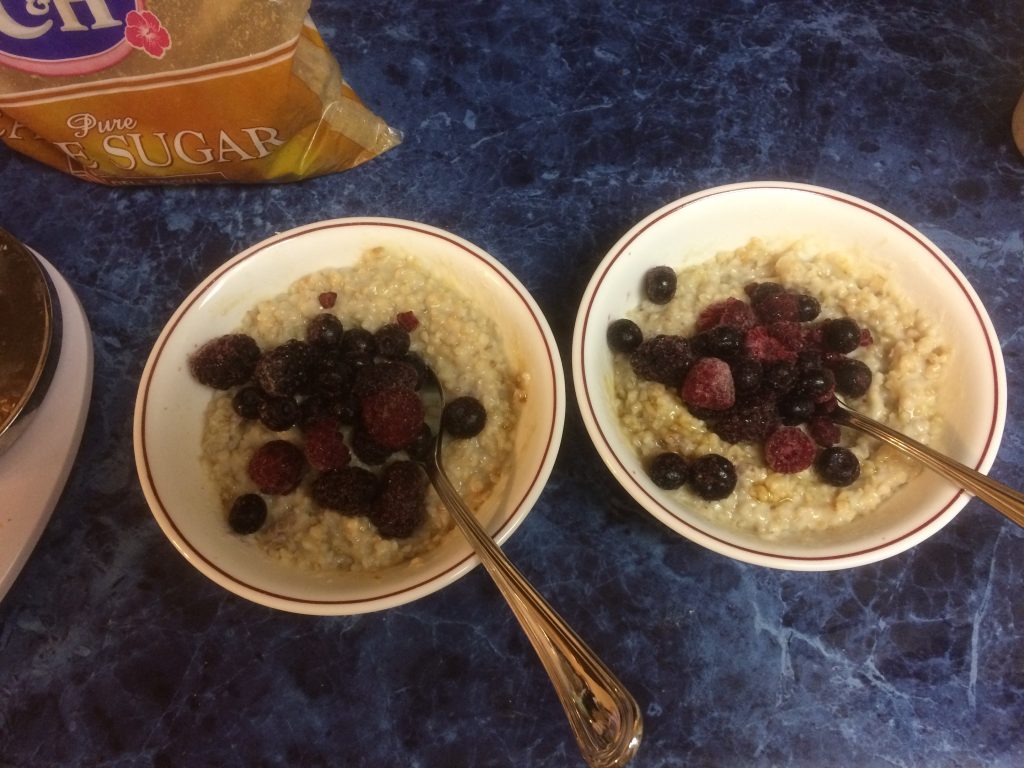
14. Serve!
15. The saucepan is probably cool enough to put into the sink. Fill it with a bit of water and put the ladle and the spatula in it. Put the spatula on the ladle to weigh it down so everything is nicely soaked to be washed. Get the top balanced in the drain and fill that with water so it soaks any splatter.
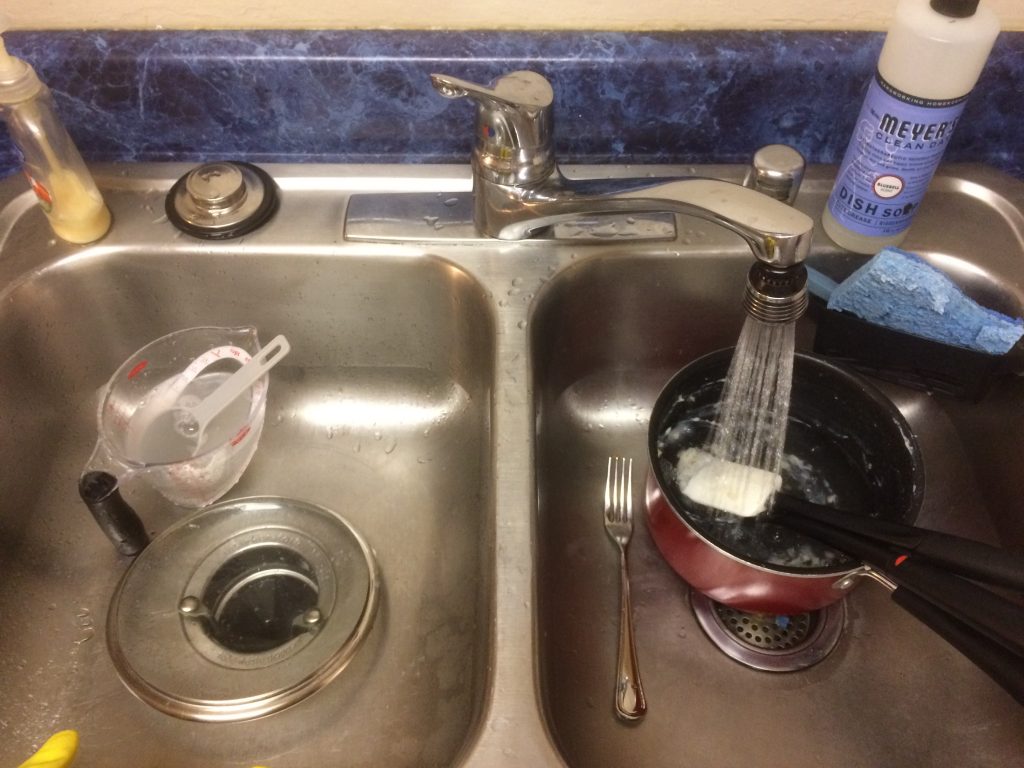
So with that much detail, the process looks a lot more complicated. Without the explanation, it seems like a mishmash of adjustments and oddities, but with the context of what I’m trying to avoid, how I can save time, and how to reduce cleanup effort, the process should be more clear.
I imagine that these detailed rituals exist in many parts of everyone’s lives, from how we take showers to managing a morning commute. In particular, we make fun of athletes for pre-game routines and superstitions, but I think we all have developed elaborate rituals that we repeat for both comfort in familiarity and a lifetime of optimizations that just make everyday life work that much more smoothly.
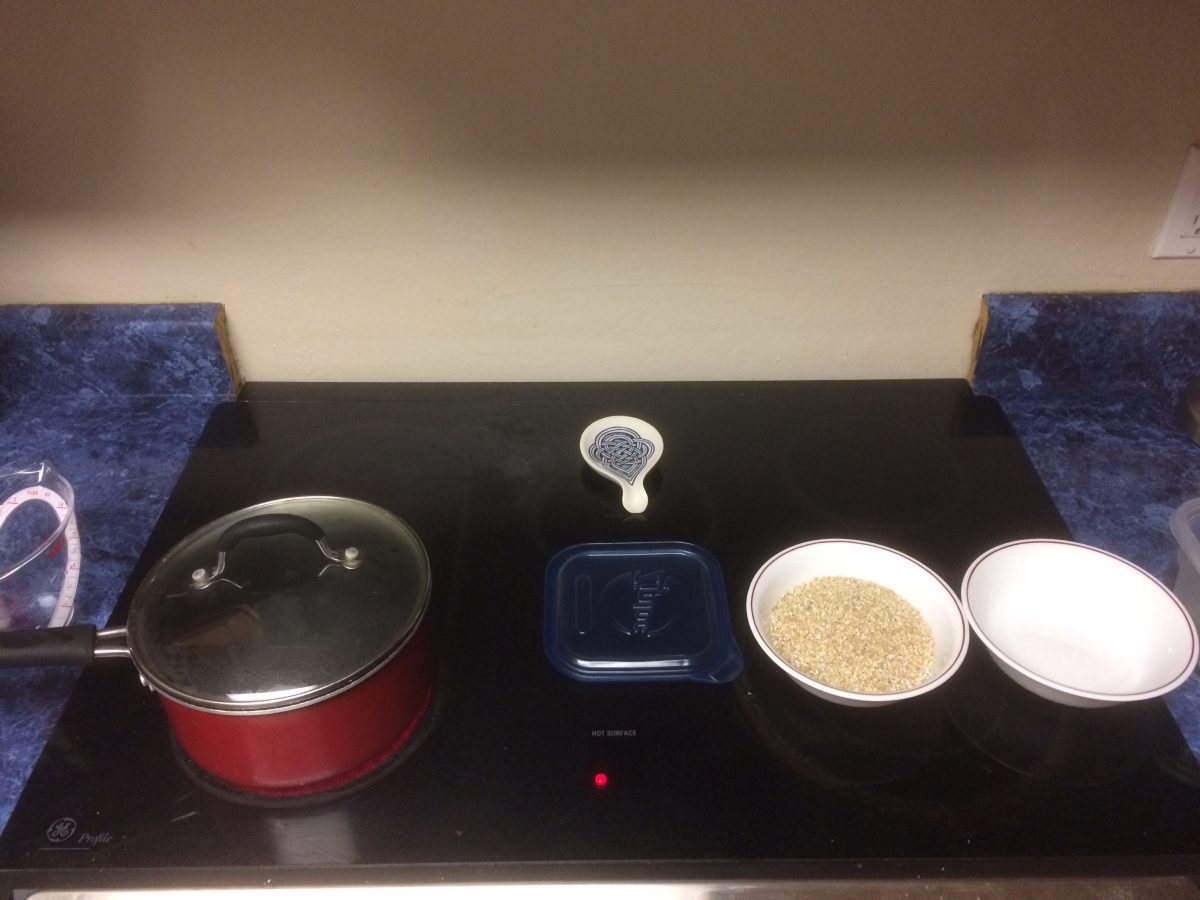
3 replies on “Way Too Much Detail About My Oatmeal Ritual”
I just make a huge pot of steel cut oats about 16 cups worth. Since it takes so long to cook, I do this while making dinner. Then I transfer it into a few containers for the fridge and people reheat their own portion in the microwave. Then everyone does their own embellishments. If people really want fresh oatmeal, they always have the option of using the 1.5min quick cooking version in the microwave.
Yes, I agree that we do have a lot of ritualised routines, mine are to save time/effort/decision fatigue.
Interesting! Most of my routines are designed for one or two people, but I imagine that a lot of that would change if I had to scale up to a whole family like you do.
[…] over ten years, I cooked steel cut oats on the stovetop. At first, I did it live, then I switched to doing it overnight to save time in the morning. […]